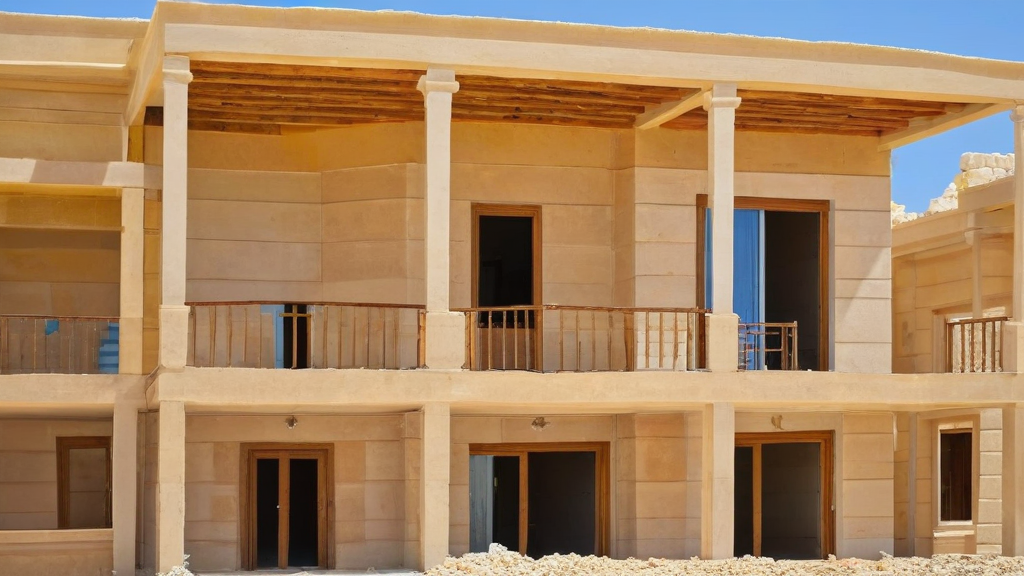Summary about owning and buying property in Hurghada, Egypt.
- Effective Strategies to Protect Your Property from Damage During Off-Season PeriodsUnderstanding the Risks of Off-Season Property Neglect.
- When your property is left unattended during off-season periods, it becomes vulnerable to a range of damages.
- Regularly check your heating system to ensure it operates correctly and is emptied or turned off according to the specific off-season conditions.
- Another critical aspect of property protection is ensuring that your insurance policy is up to date and adequately covers off-season risks.
- Review your policy details, confirm coverage for water damage, vandalism, and weather events, and take photos or videos of your property before the off-season begins.
Effective strategies to protect your property from damage during off-season periods
Understanding the risks of off-season property neglect
When your property is left unattended during off-season periods, it becomes vulnerable to a range of damages. Weather conditions like heavy rain, snow, frost, or intense heat can cause structural deterioration. Additionally, pests such as rodents and insects may invade your home or outdoor structures, causing further harm. Without regular maintenance, small issues can escalate into costly repairs. Recognizing these risks is the first step to effectively protecting your property.
Regular inspection and maintenance
Even if you are not occupying your property, it is essential to perform regular inspections during the off-season. This can prevent minor problems from becoming major headaches later. Aim to check your property at least once a month if possible. Look for signs of roof leaks, peeling paint, cracks in walls, and any water accumulation around the foundation. Addressing these issues early reduces long-term damage and maintains the overall integrity of your property.
Protect the roof and gutters
The roof is a primary defense against weather damage. Before the off-season begins, inspect shingles or tiles and repair any damage. Clean gutters and downspouts to ensure water flows smoothly away from the property foundation. Blocked gutters often lead to water overflow, which can cause erosion or water seepage inside the home. Consider installing gutter guards to reduce debris buildup during times you cannot check frequently.
Control moisture and prevent water damage
Water damage is one of the most common problems during months when properties are unattended. Excess moisture can lead to mold growth, wood rot, and foundation cracks. To prevent such issues:
- Ensure proper drainage around the property by grading the land away from your building.
- Seal any cracks or openings around windows, doors, and foundations.
- Use dehumidifiers or moisture absorbers indoors if the property is enclosed and prone to dampness.
Secure windows, doors, and vents
Unsecured entry points can allow pests and uninvited guests inside your property. Installing secure locks or boarding up windows and doors can deter vandalism and animal intrusion. Remember to cover vents with mesh screens that prevent small animals and insects from nesting while allowing ventilation to prevent stale air and moisture buildup inside.
Protect plumbing and heating systems
Frozen pipes are a major concern when temperatures drop during the off-season. Burst pipes can cause extensive water damage and expensive repairs. You can safeguard your plumbing by:
- Draining outdoor hoses and sprinkler systems to avoid freezing damage.
- Insulating exposed pipes with foam sleeves or heat tape.
- Keeping a minimal heating level inside the property to prevent indoor pipe freezing.
Regularly check your heating system to ensure it operates correctly and is emptied or turned off according to the specific off-season conditions.
Implement pest control measures
Insects, rodents, and other pests look for sheltered spaces during off-season months. To keep these intruders at bay, consider the following:
- Clear away debris, leaves, and firewood piles close to your property, which provide hiding places.
- Seal cracks and holes where pests can enter.
- Use traps or natural deterrents like peppermint oil to reduce infestation risks.
Invest in property monitoring solutions
Technology can be highly effective for property protection during the off-season. Remote monitoring systems equipped with cameras, motion sensors, and alert notifications enable you to watch over your property from anywhere. These smart devices not only deter trespassers but also alert you to potential issues such as unexpected moisture or temperature changes, enabling faster response to prevent damage.
Prepare for seasonal weather changes
Before the off-season, anticipate specific weather risks in your area. For example, if heavy snowfall is common, remove or secure outdoor furniture and ensure that roof snow loads will not exceed limits. In hurricane-prone regions, install storm shutters or reinforce doors and windows. Taking weather-specific precautions minimizes damage and helps your property withstand harsh conditions.
Maintain insurance coverage and documentation
Another critical aspect of property protection is ensuring that your insurance policy is up to date and adequately covers off-season risks. Review your policy details, confirm coverage for water damage, vandalism, and weather events, and take photos or videos of your property before the off-season begins. This documentation can streamline claims if damage occurs despite your preventive steps.
Protecting your property during off-season periods involves a combination of proactive maintenance, security enhancements, and strategic planning. By regularly inspecting your property, controlling moisture, securing entry points, preventing pest invasions, and embracing smart technology, you can reduce the risk of costly damages. Approaching property care with these effective strategies will keep your investment safe and ready for use when the season returns.
Common risks to property in off-season and how to mitigate them
When your property sits unused during off-season periods, it faces a unique set of risks that can lead to unexpected damage and costly repairs. Knowing what these common risks are and how to address them can save you significant stress and expense. Whether your property is a vacation home, rental unit, or simply a secondary residence, taking proactive steps is crucial to maintaining its condition year-round.
Risks from weather and natural elements
One of the most significant dangers to properties during off-season is exposure to harsh weather conditions. In colder months, freezing temperatures can cause pipes to burst if the plumbing isn’t properly winterized. Similarly, strong winds and heavy rain can damage roofs, gutters, and exterior walls. Snow and ice accumulation may also put unusual weight stress on structures like decks or awnings.
To mitigate weather-related damage:
- Insulate and winterize plumbing by draining water lines and using pipe insulation.
- Inspect the roof for loose tiles or shingles and repair them before cold weather hits.
- Clean and secure gutters to prevent ice dams and water overflow.
- Trim overhanging branches that could fall and damage the property during storms.
- Invest in weatherproof covers or tarps for vulnerable outdoor features.
Risks from pests and wildlife
Properties left unattended during off-season are inviting targets for pests such as rodents, insects, and birds. These unwanted guests can cause severe damage by nesting inside walls, chewing on wiring, or contaminating food storage. Furthermore, wildlife seeking shelter might find access through open vents or damaged screens, creating safety hazards for when you return.
Effective pest prevention techniques include:
- Sealing all gaps, cracks, and entry points to discourage rodents and insects.
- Clearing debris and vegetation close to the building’s foundation.
- Using pest repellents or traps around the property, especially near entryways.
- Maintaining proper waste disposal to avoid attracting scavengers.
- Installing mesh screens on vents and chimneys to block wildlife access.
Risks from neglect and lack of regular maintenance
Without routine care, minor issues such as leaks or small structural cracks can escalate into serious problems. Moisture buildup can lead to mold growth, wood rot, and degraded paint. Indoor appliances and HVAC systems may also deteriorate if left unused for long periods. If your property remains unoccupied, unnoticed water leaks or electrical faults can cause extensive damage before detection.
To reduce the risk of neglect-related damages:
- Arrange for regular property inspections by a trusted caretaker or property manager.
- Keep HVAC systems running periodically to prevent mechanical failure and mold growth.
- Ensure all appliances are properly shut down or serviced before closure.
- Run periodic moisture and mold checks, especially in basements and attics.
- Maintain exterior and interior surfaces with timely cleaning and repairs.
Risks from security and unauthorized access
Unoccupied properties can attract vandalism, theft, or unauthorized entry during off-season months. Lack of visible activity signals criminals that the property is vulnerable. In addition to physical damage, stolen fixtures or appliances can be expensive and time-consuming to replace. Without adequate security measures, insurance claims might also become complicated.
Enhance your property’s security by:
- Installing robust locks and reinforcing doors and windows.
- Using security systems such as alarms, motion sensors, and surveillance cameras.
- Setting up timed interior lights or outdoor lighting to simulate occupancy.
- Notifying trusted neighbors or local authorities about the property’s off-season status for extra vigilance.
- Regularly checking the property in person or via a caretaker to spot any suspicious activity.
Preventing landscape damage and overgrowth
Landscaping often suffers during months when it’s neglected. Overgrown plants can encroach on the building, while lawns may become patchy and unhealthy. Left unchecked, this can lead to erosion, blocked drainage, and even pest infestations. Maintaining your yard not only protects your property’s exterior but also keeps its overall value intact.
Consider these actions to protect your landscape:
- Schedule periodic lawn mowing and trimming of bushes and trees.
- Clear leaves and debris from gutters, downspouts, and drainage areas.
- Inspect and maintain irrigation systems to avoid water accumulation or drought stress.
- Apply mulch around plants to conserve moisture and prevent weed growth.
- Use plant covers or frost blankets during extreme cold snaps.
Additional tips for long-term property protection
Besides addressing specific risks, adopting a comprehensive approach to off-season property care helps you maintain peace of mind. Setting up a detailed checklist with regular maintenance cycles ensures no critical aspect is overlooked. Documenting the property’s condition through photos before and after each off-season adds a layer of accountability and can support insurance claims if damage occurs.
As a best practice, consider:
- Hiring professionals for specialized tasks like plumbing winterization, electrical inspections, and pest control.
- Keeping emergency contact information for local services handy.
- Ensuring your insurance policy covers off-season risks comprehensively.
- Communicating openly with neighbors about your plans for the property during off-season.
By proactively identifying potential hazards and taking well-planned actions, you can protect your property from damage during off-season periods. These preventative steps not only minimize repair costs but also preserve the comfort and value of your property over time.
Protecting your property during off-season periods requires a thoughtful approach that combines awareness of common risks with practical preventive measures. By implementing effective strategies such as regular maintenance, securing vulnerable entry points, and addressing potential moisture issues, you significantly reduce the chances of damage. During times when your property is unoccupied or less frequently used, threats like water leaks, pest infestations, and weather-related wear can escalate if left unchecked. Being proactive helps you catch these issues early and prevents costly repairs down the line.
Understanding the specific risks your property faces in the off-season allows you to tailor your protection plan. For instance, winter months may bring the danger of frozen pipes, while warmer, damp seasons increase the risk of mold growth. Taking steps like insulating pipes, maintaining gutters, and ensuring proper ventilation plays a crucial role in mitigating these risks. Additionally, securing your property by installing locks, alarm systems, or even surveillance cameras adds a vital layer of security against break-ins or vandalism during periods of absence.
Ultimately, dedicating time and resources to safeguard your property during the off-season creates peace of mind and preserves the value of your investment. By combining vigilance with targeted actions, you ensure your home or vacation property remains in excellent condition, ready for your return. Consistent care not only protects your physical asset but also contributes to long-term savings and stress reduction, making it well worth the effort.










